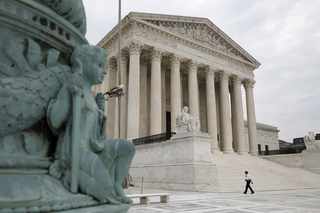When America’s founders created three branches of government, they intended for the judiciary to place a check on the other two branches and remain above the fray of partisan politics.
Over 200 years later, America’s judicial branch has instead become perhaps the single biggest flash point in our political system, with every new Supreme Court nomination greeted by increasingly apocalyptic rhetoric and viewed by partisans on each side as a titanic, zero-sum battle over everything they believe in.
Even as the Senate barrels ahead with a vote on a replacement for the late Justice Ruth Bader Ginsburg, Americans need to start thinking hard about how we can turn down the temperature on future nominations and create a less random, more orderly, and more bipartisan process for getting justices on the Court.
Read Full Article »




